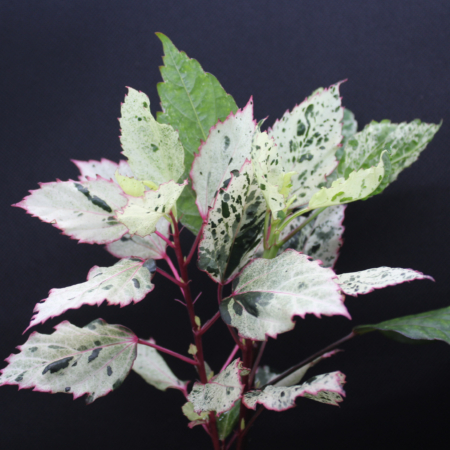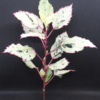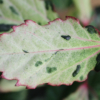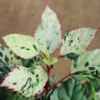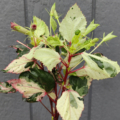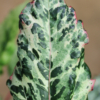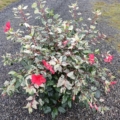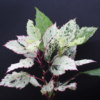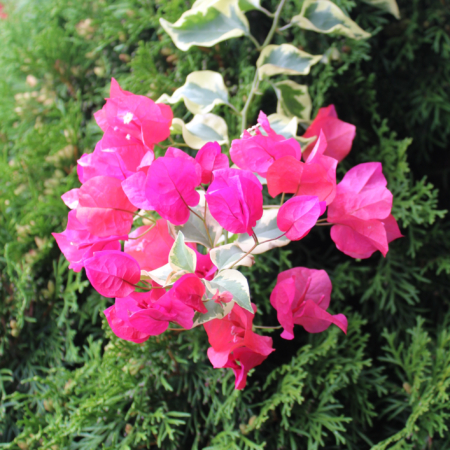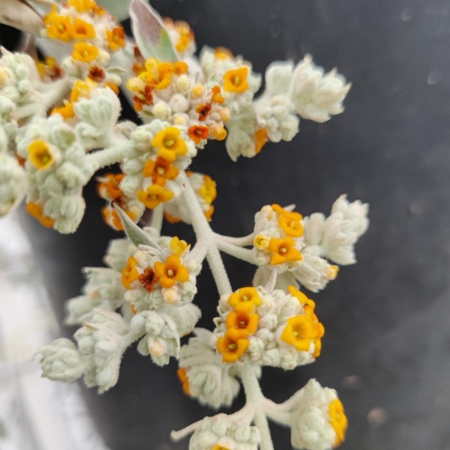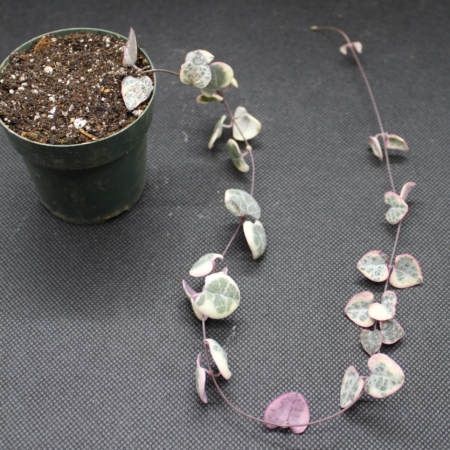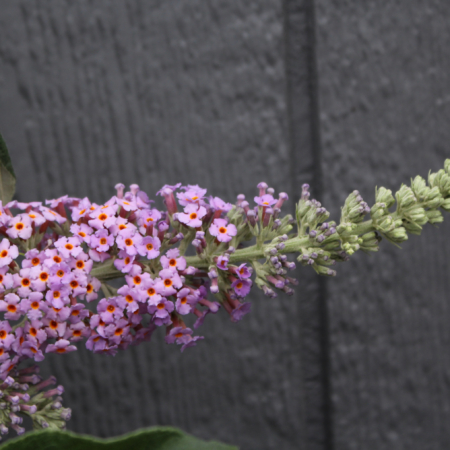Description
Hibiscus rosa-sinensis | Variegated Hibiscus ‘Aussie Queen’
Variegated Hibiscus, also known as Coopers Hibiscus, Checkered Hibiscus, Hawaiian Hibiscus, Garden Hibiscus, Chinese Hibiscus, China Rose, Fencing Flower, and Shoeblack Plant, is an old type of Hibiscus in the ‘Lilibiscus’ (Tropical Hibiscus) section of the genus that is now making a comeback. Hibiscus rosa-sinensis cultivars are the result of hybridization of ancient and modern Hibiscus varieties from a number of species― the majority being from the Mascarene Islands in the Indian Ocean and the Hawaiian Islands in the Pacific. This complex hybrid group was derived from most if not all of the following species: Hibiscus genevii, Hibiscus kokio, Hibiscus liliiflorus, Hibiscus schizopetalus, Hibiscus arnottianus, Hibiscus fragilis, Hibiscus boryanus, Hibiscus denisonii, and Hibiscus storckii.
Given its genetic history, it is not surprising that Hibiscus rosa-sinensis exhibits a wide array of traits and a dazzling variety of forms and flower colors. There are even a handful of variegated hibiscus plants that are available and widely grown as an ornamentals for their brilliantly-colored foliage of different colors, which adds great texture and interest even when it not in flower. The more sun exposure or direct sunlight, the brighter and more pronounced the variegation will be on these woody shrubs.
The ‘Aussie Queen’ variegated Hibiscus variety is a much more rare and lesser known Tropical Hibiscus cultivar. It’s often confused with the more common one on the market, called ‘Rose Queen’, which more often than not, results in misnamed or mislabeled plants being offered for sale. There is little to no info to be found online as to the origins of this particular Hibiscus cultivar and we 100% have the real deal ‘Aussie Queen’. The difference between ‘Aussie Queen’ and the ‘Rose Queen’ is that ‘Aussie Queen’ has more white leaves, some of which are almost completely white when new. Another distinguishing characteristic is that it doesn’t have an overwhelming amount of bright pink splashes of color on the leaves, but rather has pink coloring around the edges of the leaves, which gives a beautiful glowing effect. ‘Aussie Queen’ Hibiscus grows into a full bush with more of a draping habit than the other types, and grows slower due to the lack of green on the newer leaves.
Well suited for permanent potted culture as an indoor tropical houseplant, or can be grown outdoors as a perennial in zones 10+. Requires ample nutrients, regular moisture, and ample amounts of sunlight.
When purchasing unrooted plant cuttings we ask that you please be familiar and comfortable with asexual plant propagation (rooting clones). If you don’t have a tried and true method that works for you, we recommend purchasing a rooted plant.
Outdoor light exposure: Full sun
Indoor light exposure: Direct sunlight/high light
Mature height: 4 ft
Mature width: 3 ft
Hardiness zones: 10-11
UNROOTED CUTTINGS:
- Price is for three cuttings (3)
- Each cutting is 4-9 inches long. May be single top or multi-top.
- Guaranteed to be green, healthy, and alive. Plus pest and pathogen free.
- Guaranteed to be true-to-name.
- Packages are shipped out on Mondays and Tuesdays ONLY.
- If it’s believed the plants are not alive and healthy when you receive them you must let us know any concerns you have within 24 hours of arrival. If we do not hear any concerns within 24 hours it will be assumed that everything arrived in good standing. We cannot be held responsible for mishaps, errors, mistakes, or bad luck after this time frame.
ROOTING INSTRUCTIONS:
How to prepare cuttings to root via rooting cubes inside a humidity dome.
- Upon arrival, give cuttings a new fresh cut on the bottom of the stem. Then set in a cup of water for a minimum of 15 minutes.
- After soaking, gently cut or scrape small marks into the bottom portion of the plant stem (½ inch) with scissors or a razor blade.
- Dip the scarred end of the stem into rooting gel or rooting powder (gel is superior). This can be done without rooting gel, but results are not as good.
- Insert the plant stem into a rooting cube (Oasis cubes, grow plugs, soil-cubes, rock-wool cubes, etc) and place into a nursery tray with a humidity dome over the top. One cutting per cube. Custom individual humidity domes can be made using plastic cups and/or plastic cling wrap.
- After the first 3-5 days, the humidity dome should be opened up or set ajar to slowly allow more air in as the plants start to root. At this point, the cubes should be allowed to become mostly dry before adding any more water.
- Once 2-3 roots grow out of the bottom of the root-cube, the plant can be transplanted into soil.
- More detailed rooting instructions will accompany your order.

